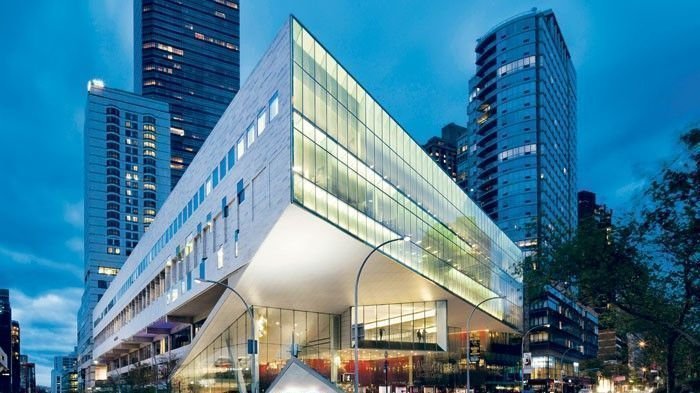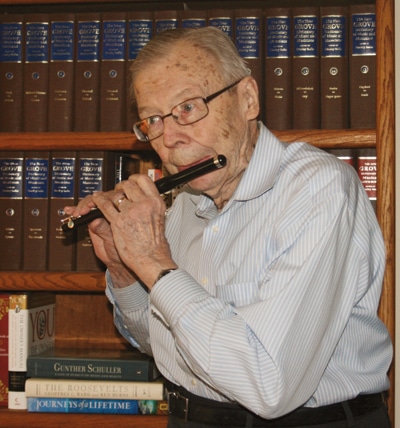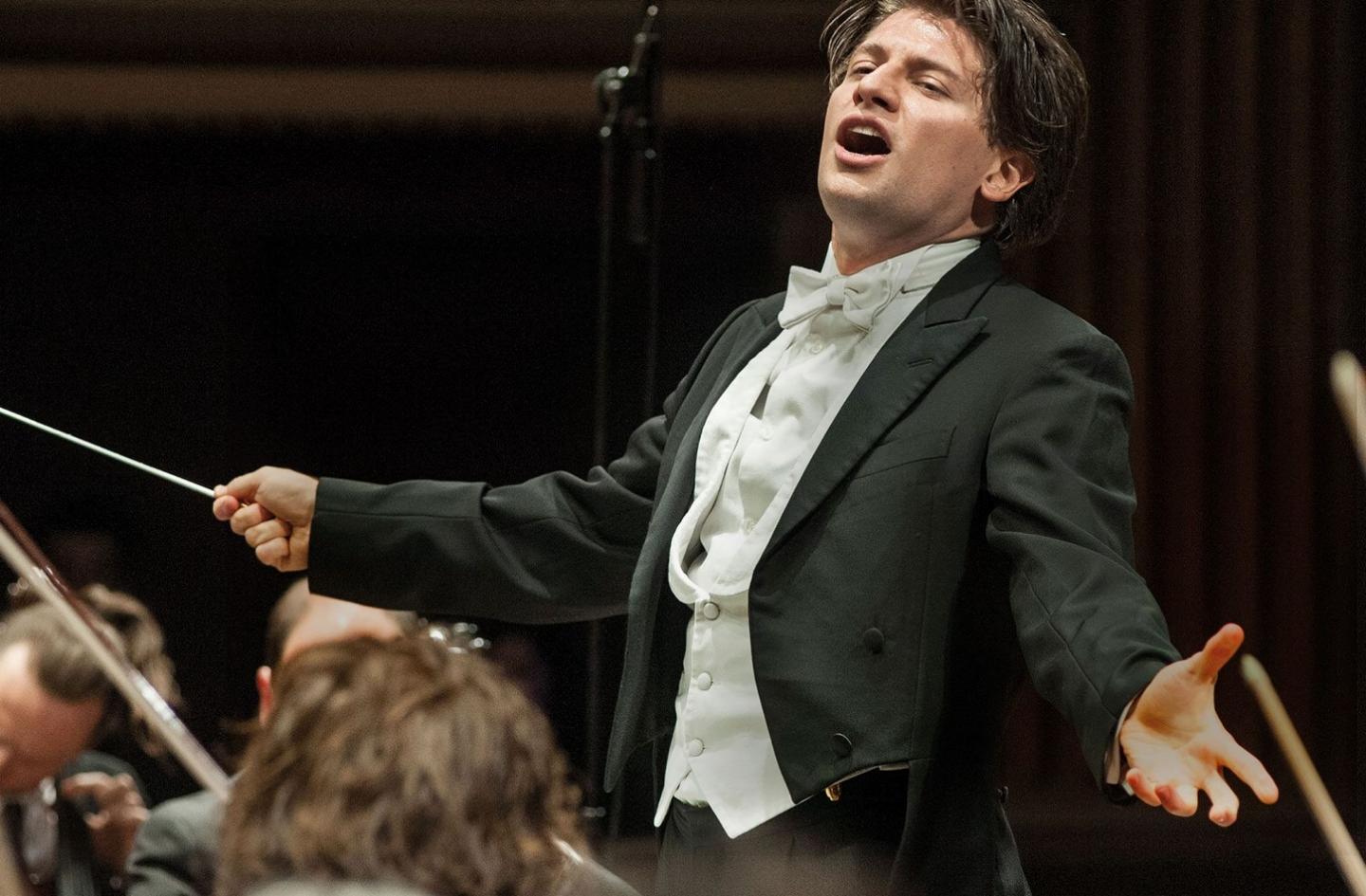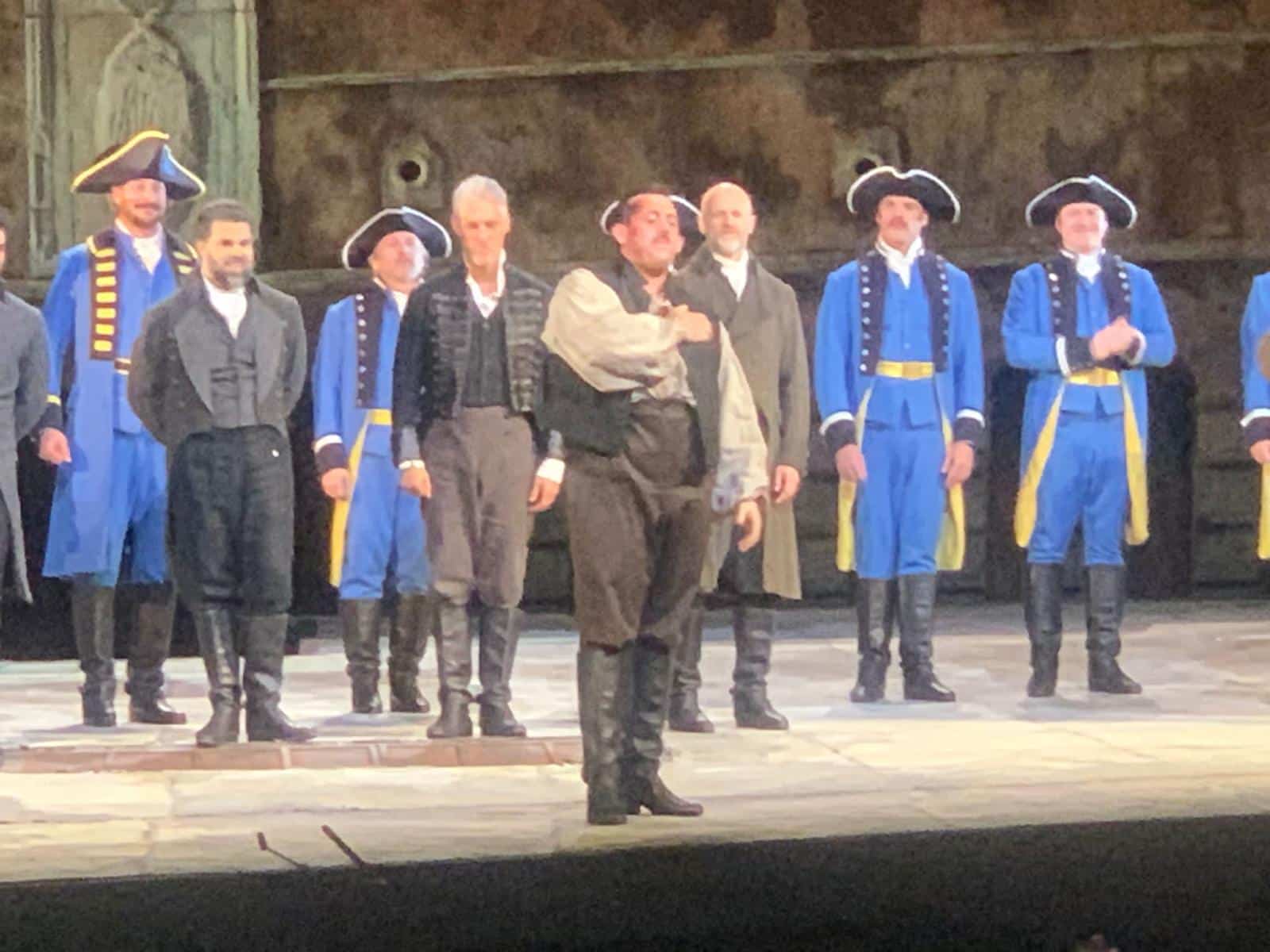Exclusive: The classical future as seen from the Borda
mainFresh off a flight from Los Angeles, the irrepressible Deborah Borda told classical music today that it had a future.
21st
IAMA International Conference, London April 2011
April
13, MEDIA DAY: Artists and Media in a Changing Landscape: Keynote speech from
Deborah Borda, President and Chief Executive Office, LA
Phil:
MANY VOICES TO MANY EARS
Good morning. It is a pleasure to join you today. My
assignment this morning is to start us thinking about “artists and media in a
changing landscape”. I just flew in from California so it might be appropriate
to start with an overview from say 30,000 feet up to survey a constantly
shifting global phenomenon. Later on it might be stimulating to take a look at
some specific strategies we have used at the Los Angeles Philharmonic to gain
traction in this rapidly changing environment. After all, I come from a country
where my President, Barack Obama, tweets. And I can’t help noticing that Queen
Elizabeth now has a Facebook page.
No matter what segment of our industry you come from, I
hope that from the grand heights of policy to the very concrete there will be
something of use for you today — even if only to admit to a common emotion. May
we agree this is a rather scary time? Auden and Bernstein had their AGE OF
ANXIETY and now we have one of our very own. Remember “normal”? My supposition
is that that is a place to which we will never return. So we can either be
anxious or we can begin to think in adaptive, creative, and flexible ways.
We are in the midst of a far-reaching technological
revolution — one that is by turns either strangely underestimated or overblown.
The fallout from that change is redefining society — and the music profession,
which is having to redefine itself, is a microcosm of the larger world. The
problem is that we aren’t quite sure how best to adapt to this new world, and
to inhabit it vibrantly.
I realize that this is a music industry conference, so
please bear with me as I make a little detour into world politics. Only weeks
ago, we witnessed a stunning and swift populist revolution in Egypt. In a
highly repressive atmosphere, it was organized and implemented through social
media. In the “old days,” you fomented a revolution by sending in your troops
to take over a radio or TV station, rendering one voice to many ears. With the
advent of social media, this is no longer necessary. It is now many voices to
many ears. The internet connects hundreds of millions of people, and there is
no single controlling organization. As the author and social commentator
Malcolm Gladwell recently observed, “…hierarchies are sent askew and monopolies
are broken.”
Here’s a stunning fact: 1 in 13 people in the entire world
are now on Facebook, according to the source Online Schools. The individual can
broadcast to many, becoming the distributor and the broadcaster, via social
media and YouTube. This, along with changing distribution technologies, means
we are in a media landscape that offers the consumer almost limitless options
for information and content. It’s up to all of us to try to figure out how to
use new media successfully. Adaptability, as Darwin realized, is the key. We
must understand the importance of adapting to the changing landscape, and do it
with the greatest possible flexibility, because everything may change again by
the end of this year, or even the end of this speech.
Consumers no longer obtain information from a single
source, and they formulate their opinions via a tapestry of sources. Little
more than a decade ago, three major television networks ruled the airwaves in
the United States. Americans formed their worldview through them. Now even a
modest cable package offers 400 stations. A nation of viewers which defined
itself and the world by watching three channels is now flooded with
alternatives. Newspaper executives are frantically trying to capture audience
and dollars in an age when it is easier and often free to go online. The number
of paper books I have purchased in the past two years has diminished by 90%
because I have my trusty Kindle. And I am a hard-core reader who loves the feel
and look of an old-fashioned print book. Our descendants will laugh their
holographic heads off when they hear about us having driven back and forth to
video stores.
The rate of change in the world and our industry is
dizzying. Access to more information, more easily, is surely positive — but
there is a flip side: with it comes more “noise,” more competition for the
attention of our music lover, the consumer, our patron. Today’s consumer is
always connected, with many windows open on several devices. Our challenge is
to use new media to attract and hold these consumers, to “friend” them. The
trouble is many of the people who need to exploit new technology too often
stand in its way. Given the impact of Napster at the end of the 20th
century, why did we not all immediately understand the change in consumer
buying patterns and the importance of iTunes when it arrived in 2003? We missed
the boat, and we can’t do that again.
This leads me back to our art, our passion — the world of
music. There has truly been a “paradigm shift” in the landscape, both
technologically and in changing audience expectations. Let’s quick-scan a list
of a real-time progression of change.
The ’90s saw a boom in product demand as the world
transferred their musical archive to CDs. We have now made another Olympian
leap — to digital distribution. Immediate access and availability of product is
now both a reality and an expectation. Audiences can download a full album
within seconds of release, or sign on to YouTube to see video captured by fans
at a concert, or a TV show they may have missed. The fact that more than 2
billion videos are viewed daily on YouTube is a testament to current audience
appetite for content, and especially audio-visual content, which at one time
was much more expensive for the average individual to produce.
With access to so much content, a lot of it free, audiences
on average are less apt to pay as much as they once did for recordings. Sales
for a successful album have been readjusted in the last decade. When I was
Managing Director of the New York Philharmonic in the early ’90s, we counted on
close to one million dollars a year in recording royalties flowing to our
coffers. While I can’t reveal another orchestra’s secrets, the amount today is
a fraction of that and this holds true across the board for American
orchestras.
The same rise in social media which led to political
dethroning, has meant that our audience can provide us with immediate feedback.
Not long ago, we expected to get a few letters a couple of days after a
controversial program. Now, within minutes it’s on our Facebook page. This is a
mighty tool and our single most direct connection to our audience. The real
time interchange with audiences is so valuable that high-level marketing
professionals speculate that social media, properly used, may supplant current
audience research methods.
Audience expectation is a two-headed monster which demands
care and feeding — but a monster properly harnessed can be a very good friend.
Audiences now demand instant gratification. They want access to artists, top
notch artistic product; they have higher expectations and want it cheaper, free,
and with fewer barriers to gaining access. “Why can’t I get exactly the seat I
see on this chart for the concert?” or “Why can’t I have a freshly burned CD of
this concert as I walk out the door?” However, what sounds like doom and gloom
in terms of growing expectations is, in fact, positive, because never before
have we been able to get closer to our audience. So, let’s see how we can do
it.
I speak to you today through a rather specific lens — my
role as the executive leader of an American orchestra which in the past decade
has become the single largest symphonic institution in the US and second only
to the Metropolitan Opera in budget size. We have tried to re-imagine and
redesign ourselves as a broad-spectrum producer of music, media, and
educational initiatives. We guide our decision-making by our commitment to two
deeply held values — innovation and excellence. That may sound a bit
simplistic, but we have found that rigorous dedication to these principles has
resulted in vibrant and varied artistic production as well as fiscal stability.
That said, we have found the changing landscape of media very challenging to
navigate.
Might new media and the internet allow us to establish a
globalized brand, an opportunity to spread our mission and differentiate
ourselves in a crowded landscape? An opportunity to become a trusted partner,
curator, in providing the very best in musical content and experiences for our
consumers? We think so. Here are some concrete ways (which in real time may no
longer sound particularly innovative to you) in which the LA Phil has embraced
the changing media landscape.
When we began distributing concerts on iTunes in 2005, it
was a radical departure from commitment to physical product. As one of the
first orchestras to welcome digital distribution, we had to make fundamental
changes in approach and concept. First, a new financial arrangement with
orchestra members was necessary, one that treated new media differently from
traditional media. Basically, this meant not paying the musicians upfront but
using a profit-sharing model. Next, a much quicker turnaround of recordings for
release was critical. For us, the numbers might not have been as strong but we
decided that the promotional impact would be of high value because it was
crucial to our brand that we be “in the space”. It was and is particularly
important that the releases be representative of the organization’s and music
director’s artistic vision, including our commitment to new music, to better
define our brand.
One very successful way we have deepened the relationship
with our audience is with mobile apps — three in particular. With BRAVO GUSTAVO
— an engaging game with the phone as a baton — you can conduct excerpts from a
Mahler Symphony with Gustavo. Our LA Phil and Hollywood Bowl apps let you get
anything from tickets, program, and artists information, to a map of our
orchestra layout and individual musician photos, as well as a wealth of other
information. These apps are free, and enhance the patron experience. All three
have had more than 100,000 downloads.
The key benefit of this tool is that it opens up a two-way
conversation with consumers and increases our presence in the lives of our
audience so that we can stay relevant and “top of mind”. It is one of many
channels through which we communicate to our audience. The LA Phil’s Facebook
pages have a combined following of approximately 45,000 followers. We are also able
to speak to our digital family via Twitter, about virtually anything,
distribute exclusive content, and run promotions.
As we planned the introduction of our new Music Director
Gustavo Dudamel we wanted to send a strong message to a broad audience. This
message had to do with community, education, and music for all, and it was
critical that we leverage new media to deliver it. Dudamel’s first concert as
our Music Director was called “Bienvenido Gustavo,” a free 8-hour extravaganza
at the Hollywood Bowl that featured jazz greats such as Herbie Hancock, star
rock artists like Flea, and YOLA, our El Sistema-inspired youth orchestra, led
by Gustavo. The evening culminated in a performance of the Beethoven 9 with the
LA Phil and a mega community chorus. We streamed all 8 hours. Every artist on
the stage accepted no media compensation — a major change from the past. We
employed media to send a strong message — not for monetary gain. In turn, this
allowed us, and everyone involved in the day, a unique opportunity to connect
in LA and around the world with 40,000 viewers tuning in.
When the Metropolitan Opera launched their live HD
transmissions, many considered it a publicity stunt, a one-year wonder.
Surprise! It’s a hit. Soon after, the Berlin Philharmonic began HD transmissions
which are available online in the orchestra’s Digital Concert Hall. At the LA
Phil, we saw a unique opportunity to further establish our brand by utilizing
the singular assets of Gustavo Dudamel, Walt Disney Concert Hall, and our
orchestra. Here was a platform to bring music to more people in a live (key
word) and engaging way. These broadcasts let audiences see Gustavo and the
orchestra in new ways — literally being in Gustavo’s
dressing room just before the concert, in live interviews backstage, in
rehearsal clips and insightful pre-taped interviews — all of which allows each
viewer to be a fly on the wall as everyone prepares for the concert (and
recovers after). We are now playing in more than 500 theaters in the US and
Canada and our audience share has grown after just two concerts. This is an
investment in brand building and also keeps the band right on their
mettle.
Now a few summary thoughts as we kick off these meetings.
We are staring head on at a singular opportunity. Yes, it is about audience
access, changing expectations, and the allocation of resources to keep up. What
will be required to stay on top of the multi-channel 21st-century conversation
we may now hold with our audiences?
More importantly, it is about agility and action to stay
relevant. We require a long-term view, which is not so different from the past,
but access, tools, and revenue streams have surely changed. Finally, let’s return
to that 30,000-foot view where we began this morning to acknowledge something
else. Creating impact in this new media landscape is about alignment of
institutional values. It is dangerous to adapt values to a new technology or
system of delivery; this is how organizations or individual artists could lose
sight of their mission, identity, and central purpose. It is about the concept
that we are building brands, not only producing recordings as an end unto
themselves. In the end, innovation and excellence must be our guides.
In closing, I would simply like to observe that since I
began this talk, 34 million videos have been watched on You Tube. It is a time
of many voices to many ears. Thank you very much.





Thank you so much for sharing this – it is most thought provoking…
Regards
Larry Elliott
I like this well written speech. It ties together the essence of how we function as musicians in the 21st century. As I have said before (lest anyone should forget LOL), when I created and performed the first live online audio/video concert on the internet in NY in 1997 (covered by the NY Times, USA Today etc), it was to say ‘welcome to the new age of music through technological advancement’. I am personally gratified to see this progression as Ms. Borda explains. It’s getting there–not quite yet. I am still waiting for all performing venues to have online tix available so anyone from anywhere in the world can virtually attend any ‘live’ performance on all levels. Perhaps in 25 years or less? That was my dream in 1997.
Thanks so much for sharing this! It makes me recall when, a few years ago, our now-retired PD at WCNY and a program host were talking sadly about how it looked like curtains for classical music radio; “it’s just not what it used to be,” etc. I didn’t want to put down these terrific gentlemen who had worked hard in the business for years, but I did say that I was an optimist and wasn’t going to throw in the towel. They looked a little surprised at this younger gal saying such a thing, as if I were going to start a buggy whip shop or a hoopskirt factory! However, I wasn’t ready for any “premature autopsies,” to quote Wynton Marsalis’ musical piece about those proclaiming the death of jazz some years back.
Well, it’s been around five years since that gloomy conversation, and we’re here better than ever at WCNY-FM despite tough times. As Norman knows, we just had our first $100,000 membership campaign, which is huge for a classical station in a small-to-medium market. Many of those pledges have come from places outside our local area, especially from Canada where the CBC cut back a couple of years ago on classical programming. However, people who live in places with no classical radio know they can hear us online, and we’ve made it simpler for them to do so by improving access to our web services. We even have web listeners in cities like New York and Seattle that have their own good classical stations; they like having another choice! Also, we recently revamped our website, complete with blogs for each announcer, and I got the word on Monday from the powers-that-be that I’ve been getting a bunch of hits from various countries just since April 1st.
What really heartens me is that we did all this without dumbing down our programming. We’ve actually increased the amount of classical music we play on our main station by changing a jazz program from five days a week to just Sundays, and we put jazz on an HD channel for those who want it every day. Result: the ratings actually went up. I am not so foolish as to think that WCNY-FM is going to be the #1 station in this market, but we have improved in many ways, and one thing that has helped is the new technology. When my former boss retired, the last thing he said to me before he left town was “Keep the faith, you hear?” We have done so; it’s just that now we reach people in several different ways. Classical music radio hasn’t died out, as my former boss feared it would do; the only thing that has died is the old way of getting it to the public. I think of how some radio hobby listeners I know sniff at streaming audio and the like, saying, “How can you lower yourself like this, Marie? It isn’t radio.” Perhaps it’s not the old terrestrial radio, but to get the music and programming out, you go to where the listeners are, and more and more, they’re online and/or using social media. To make another joke on her name, Deborah is obviously on “Borda” with new
media, and it’s certainly been a big help for our station; good luck to the LA Phil and other musical organizations who embrace the new ways, since it gets the music where it’ll be heard!
Thank you very much for sharing this most thought provoking speech.
I didn’t quite see where quality music making fits into this new media future. Did I overlook something?
I disagree with the second commentary of this article. It is just long list of self promotion and full of empty show-off words. The truth is that vast major orchestras have no clue how to attract broad audiences effectively and economically.
Ms. Borda hits the nail with her comments on new media, however: the industry at some point needs to make money, and Youtube and Facebook do not generate income for the producer/artists. They are excellent for PR purposes. No music lover will pay for watching the Berlin Phil. on a PC monitor, for free this works fine, but not for permanent music consumption. No media deployment (cinema, DVD, CD or live streaming) can replace the live experience of a concert or opera performance. Whether one buys CDs or downloads files from iTunes is also a matter of quality, the music lover and collector wants his CDs in his shelf with booklet, etc. and not low quality MP3 files. The problem is a massive amount of available content, with a substantial amount of recordings not being available for purchase. Try buying Cosi with Klemperer, it is out of the distribution cycle and cannot be purchased. Recorded media – live or in the studio – keeps the legacy of artists alive for the future. The golden age of the music business is gone (see Norman´s book), because the young generation does not see the necessity of paying for music consumption. This can only be changed by providing reasonable flat rates on a subscription basis. For this to happen, we need more reliable technology, transparent rights-clearing procedures over country borders and the “media box” for a comfortable audiovisual experience. The laptop, iphone or ipad are certainly not suitable for this.
It’s great to see orchestras (musicians and administrators both) engaging with the possibilities of social media. It’s great to have Borda offer an insiders view and for LA to lead the way in many of these initiatives.
What I wonder / worry about is if by using social media as a brand builder, we are missing the essential lesson of Egypt: “It is now many voices to many ears,” as Borda points out in paragraph 4.
This means inviting musicians, listeners, and community members to CREATE content, to forumlate the message (maybe with limited oversight from the marketing department). Crowd sourcing requires sharing control, sharing the rights of authorship. For any institution this is frightening. For a cultural institution, in particular, this is not just about engaging a community in brand delivery, but about becoming part of the community and allowing a brand to live through its users. The place to start, in the orchestra world, is with our musicians and with “embedded bloggers” invited to peek backstage and into rehearsal and share what they see.
As an Angelino I am proud of our LA Philharmonic and all they have done to advance the cause of serious music in our city. But I can’t help feeling that Ms. Borda – even with her keen insight and extensive experience – is missing the real paradigm shift.
2000 years ago we sat around the community campfire to sing and play such instruments as we could fashion from our rough surroundings. 1000 years ago we sang and played in churches with a more refined sound and a better acoustic space. 200 years ago the concert hall evolved to house our most sophisticated musical instruments and voices in an optimal acoustic environment. And people would pay money to enter the hall to see and hear what was played there.
But today most people I see are walking around wearing ear buds connected to a cell phone – the sound brought directly from the Internet to the ear drum. In such an environment acoustical musical instruments are not a necessity, nor is the concert hall – the music can be created and then delivered electronically directly to the listener’s ear. There is no ticket fee and only a small charge to download the content. This is the future of music.
There is a story about Western Union, who enjoyed a monopoly on telegraph service when Alexander Graham Bell invented the telephone. There was great excitement in the board room of Western Union – the executives there saw the telephone as the ideal way to inform their customers that a telegram had arrived for pick-up at the local Western Union office.
Ms. Borda is sending us email – announcing that a telegram from the 19th century has arrived down at Disney Hall.